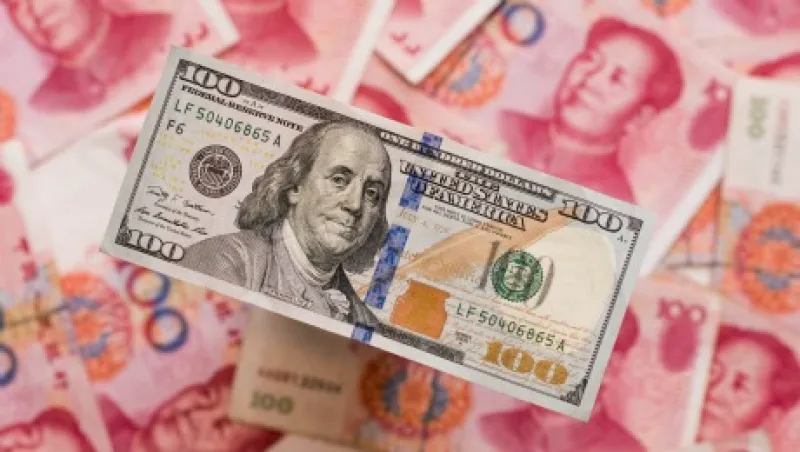When the Federal Reserve raised interest rates December 16, many analysts expected the dollar to rise significantly against the euro and yen, thanks to the divergence of monetary policy between the Fed and the central banks of Europe and Japan.
But so far, that hasn’t happened. Most recently, investors’ shift to weaker expectations of the U.S. economy and a more dovish outlook for Federal Reserve policy have hurt the greenback. And even before those views changed, the dollar suffered as turmoil created by plunging commodities prices and global economic woes led traders to curb risk by unwinding short euro and yen positions. Those positions were established to finance investments in higher-yielding currencies.
The focus will soon return to interest rate differentials, however, boosting the dollar, analysts say. The Bank of Japan shocked the financial world by pushing a benchmark rate into negative territory on January 29. That represents a seismic shift in the currency environment, analysts maintain. “This is a significant change in policy for a central bank that was hawkish in the fourth quarter,” says Paresh Upadhyaya, director of currency strategy for Pioneer Investments in Boston.
He and others expect additional easing from the BoJ and European Central Bank, along with more rate hikes by the Fed. That will push the dollar to about 125 yen and to near parity with the euro by the end of the year.
“What has been dominating the market is risk aversion,” but that will change to “divergent monetary policy,” says Athanasios Vamvakidis, head of European currency strategy for Bank of America in London.
As for the euro’s and yen’s recent strength, money market traders and investors have gone from expecting three rate hikes this year, after the Fed lifted rates in December, to now expecting none or one move. The drop of oil prices to a 13-year low and the slowest Chinese economic growth in 25 years have sparked worries about the U.S. economy. That concern was confirmed by modest U.S. gross domestic product growth of 0.7 percent for the fourth quarter.
All that “led to a reassessment by the market of the trajection of Fed policy,” says Marc Chandler, global head of currency strategy at Brown Brothers Harriman & Co. At the Fed’s meeting in December, policymakers predicted four rate hikes for this year. That’s obviously far from the market’s current assumptions.
“A new view has emerged as to where the economy is heading for 2016, and the December rate hike now looks like a policy mistake,” says David Gilmore, a partner at Foreign Exchange Analytics, a currency research firm in Westbrook, Connecticut. Some economists say growth may fail to reach 2 percent this year, after a 2.4 percent expansion in 2015.
Meanwhile, for the past year investors have been borrowing euros and yen, to take advantage of low rates, and then selling those currencies to invest in currencies with higher-yielding assets. But the financial and economic turmoil that has arisen since the Fed lifted rates led investors to cut back on risk, reversing those positions. And that, in turn, led to purchases of euros and yen for dollars.
“The dollar used to be negatively correlated with risk appetite during the Fed’s quantitative easing, because it was used as a funding currency,” Vamvakidis says. “But now it’s an asset currency. It acts as a risk currency against the euro and yen.”
When it comes to the Fed, some analysts say the markets have it wrong, that the central bank will boost rates two or three times this year, as the U.S. economy continues to grow 2 to 2.5 percent. That would match its performance of the past six and a half years. Meanwhile, they expect the BoJ and ECB to intensify their easing programs. “The market has no Fed hikes priced in. That’s ridiculous,” Upadhyaya says.
In the wake of last month’s rate cut by the BoJ, many analysts forecast that it will increase its quantitative easing, which is now set at 80 trillion yen a year. That will be necessary because inflation, which registered 0.1 percent last year, is running far below the central bank’s target of 2 percent, they say. And that additional QE will “continue to drive interest rate differentials in favor of the dollar,” Upadhyaya says.
He and others anticipate additional easing from the ECB too. Upadhyaya foresees an expansion of its QE to perhaps €70 billion ($79 billion) a month, from €60 billion currently. And he looks for a further reduction in official rates too. “The problem for European policymakers is that the collapse in oil prices makes it difficult for them to hit their inflation target,” just under 2 percent, he says. “There’s a real risk that inflation expectations will become unhinged.” Euro zone inflation totaled just 0.2 percent last year.
So whereas the dollar may not have strengthened in the first six weeks after the Fed’s initial rate hike, interest rate differentials will push it higher in coming months, some analysts say. “The divergence in monetary policy is unfolding now,” Upadhyaya says.
Get more on foreign exchange.







